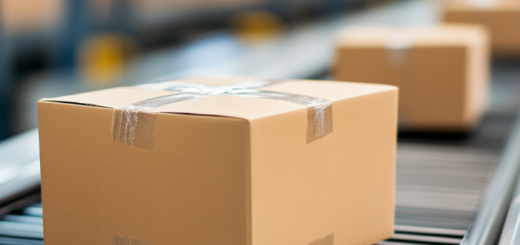Innovative logistics methods: how to reduce transport costs
Transportation of goods is one of the most important components of logistics processes, and not only the speed of delivery, but also the amount of costs for the company depends on how efficiently transportation is organized. In recent years, more and more organizations are turning to innovative logistics methods that can significantly reduce transportation costs. The introduction of new technologies, improvement of management processes and the use of modern approaches make it possible not only to increase efficiency, but also to significantly reduce costs associated with transportation.
New technologies in transportation: how they help reduce costs
One of the most effective ways to reduce transport costs is to implement new technologies, which are actively used in logistics. It is especially worth highlighting the automation of processes, the use artificial intelligence And digital solutions. Modern logistics companies are increasingly using intelligent systems to plan routes, which allows them to avoid traffic jams and choose the fastest and cheapest routes.
With the help of such technologies, it is possible to significantly reduce operating costs, reduce human error and reduce the time spent on various tasks. For example, automation of warehouse processes can reduce the time for sorting and storing goods, which in turn affects the speed of their delivery. It is also important to note that internet of things (IoT) plays a key role in tracking the status of cargo and transport, which helps to monitor transportation conditions in real time and quickly respond to possible problems.
Route optimization: how to choose the most profitable delivery routes
One of the most important aspects in logistics is the selection of optimal routes. With the help of modern geographic information systems and algorithms, you can select the most efficient route for transporting goods, which will significantly reduce fuel costs and delivery time. The use of such technologies allows logisticians to accurately plan routes by analyzing data on the current traffic situation, weather conditions and other factors.
Important tools for route optimization are:
- Geoanalytics, which helps analyze the current state of roads and predict possible delays.
- Algorithms for dynamically adjusting routes, which can automatically change the delivery route in case of unforeseen circumstances.
- Machine learning technology, which over time becomes more and more accurate in predicting the most profitable routes for delivery.
Using these methods avoids vehicle downtime, reduces fuel costs and speeds up the delivery process, ultimately resulting in significant savings for the business. In addition, such technologies can reduce the carbon footprint, which is especially important in light of modern environmental requirements.
Smart warehouse management: how it affects transportation costs
Effective warehouse management has a direct impact on transportation costs, since the correct distribution of goods in the warehouse can greatly simplify the packaging and delivery processes. Warehouse management systems (WMS) automate processes, allowing you to process orders faster and reduce preparation time. This also helps reduce errors and damage, which also reduces costs.
Implementation smart technologies for inventory management allows you to correctly plan the number of goods in the warehouse, avoid surpluses or shortages of products, which in turn helps to optimize logistics. For example, management systems can automatically track inventory levels and alert you when replenishment is needed, helping to avoid emergency orders and the associated extra shipping costs.
Redistribution of cargo flows: how to use cross-docking to reduce costs
Cross docking is a method in which goods arriving at a warehouse are not stored there, but are immediately redistributed and sent to their destination. This method helps reduce storage time, minimize warehousing costs and speed up the delivery of goods. Cross-docking allows you to reduce operating costs and speed up the entire logistics process, since goods do not stay in the warehouse for a long time, but immediately go on the road.
Using cross-docking can significantly reduce delivery time, since goods go through minimal processing steps and do not need to be stored in a warehouse for a long time. This method is especially beneficial for short term supplies, when it is important to deliver goods as quickly as possible, as well as for products that do not require long-term storage. However, it is important to remember that cross-docking requires careful coordination and control at all stages to avoid errors and losses.
Joint deliveries and cargo grouping: how to save on transportation
Joint shipping is a practice in which multiple companies combine their cargo for delivery via one vehicle. This allows you to significantly reduce transportation costs, since transportation costs are divided between several parties. This approach is especially beneficial for small and medium-sized businesses that cannot afford to rent an entire vehicle for a small batch of goods.
For successful implementation of joint deliveries, it is important to properly organize cargo grouping. It is necessary that goods from different sources do not conflict with each other and are suitable for the same transport. Grouping allows you to significantly increase the vehicle load factor, which leads to lower transportation costs. It is important to consider that this approach requires competent logistics coordination and trust between partners.
In the world of logistics, there are many ways to reduce transport costs, and they all involve using modern technologies, improving management processes and optimizing routes and warehouse operations. Innovative methods such as automation, artificial intelligence and geographic information systems not only help reduce costs, but also significantly speed up the delivery process. Optimizing routes and warehouse management helps to efficiently redistribute cargo, and methods such as cross-docking and joint deliveries help minimize transportation costs.
However, it is important to remember that in order to achieve maximum savings, it is necessary to implement these technologies comprehensively, taking into account the characteristics of a particular business and its needs. There is no one-size-fits-all solution that will suit all companies, and only a personalized approach can lead to significant savings. Each implementation must be carefully thought out and calculated to ensure that transport costs are reduced without compromising quality of service or delivery times.
In the future we can expect that innovative solutions will continue to evolve, and many companies will be able to further optimize their logistics processes. Already today, new types of transportation are actively developing, such as driverless vehicles, which may be able to significantly reduce transportation costs. It is important to be prepared for these changes and adapt to new conditions.
Artificial intelligence helps in predicting the best routes, analyzing traffic situations and automatically regulating traffic flows, which can significantly reduce fuel costs and speed up delivery.
Cross-docking allows you to minimize the time for storing goods, reducing warehouse costs, and speeds up the delivery process due to the rapid redistribution of goods, which ultimately leads to savings in transportation costs.



